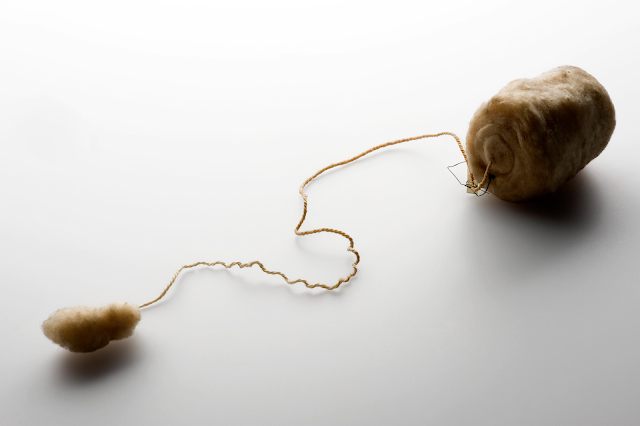Some women experience more pain and leakage when using tampons than regular pads for their periods. Using tampons that don’t fit properly or aren’t the right kind can lead to this problem.
But if appropriately used, tampons can absorb menstrual blood and let us go about our day without worry.
Women’s health expert Sara Youngblood, CNP from the Cleveland Clinic, says, “Tampons are a great option for most people because of how easy they are to use.” According to this page from the Cleveland Clinic, Youngblood also provided instructions for its proper use. How to use tampons correctly: You should know a few things before using them.
Step 1: Get the right tampon.
The amount of blood a tampon can absorb is used to classify different sanitary tampons. In contrast to popular belief, Youngblood says, tampons are not sized based on the genital area.
The words for it, she explains, refer to how heavy your periods are. Junior and light tampons are for moderate flow, while super and ultra-tampons are for heavy flow.
Further, we may need to adjust the absorption rate according to the day of the menstrual cycle. I’ll break it down for you: • A junior, slim, or light tampon is recommended for days with a light flow. You may find that this works best on the first day of your period if your flow is weak or on the last day when it has slowed.
A regular absorbency tampon should be used on light flow days, while a super, super-plus, or ultra-tampon should be used on heavy flow days. Youngblood says that increasing the absorbency of tampons may be necessary if they become saturated with blood in a short amount of time. If your period isn’t weighty and you notice a white, unsaturated area on the tampon after removal, he advised you to reduce the tampon’s absorbency.
Step 2: please wash your hands.
Make sure we thoroughly wash our hands before inserting tampons. Youngblood explains, “We put something in the vagina, so we have to keep everything as clean as possible to stop bacteria from getting into the vagina.
Step 3: Try to unwind.
If you’re not used to using tampons, you might feel anxious when putting one in. We become tense when we are worried, making it harder to complete the task.
Youngblood explains that when we are anxious and afraid, the muscles in our vagina constrict, making it challenging or uncomfortable to insert a tampon. Before beginning, take a few deep breaths to relax. Let the body unwind, and the muscles release as we inhale and exhale.
Step 4: Settle into a cosy position.
While seated on the toilet, we can insert tampons. As you squat, Youngblood says, “Spread your legs wide and separate your knees, just a little wider than your hips. “We can put one foot over the toilet or tub if we’re unfamiliar with the procedure and would like a little more room. This might make it easier for us to tampon at an angle.
Step 5: Prepare the tampon’s handle.
The tampon should be unwrapped and held in the dominant hand. Hold the applicator’s bottom with your thumb and middlefinger, and cover the plunger’s tip with your index finger (where the string exits). Using this as leverage, we can force the tampon out of the applicator and into the vagina by pushing the plunger into the applicator.
Step 6: Identify the vaginal opening
The labia, also known as the lips or skin folds that make up the outside of the genitals, are what we commonly refer to as the vagina. The tampon enters our bodies’ tunnels called the vagina and vaginal canal.
Use your hands to spread apart the labia so you can access the vaginal opening to insert the tampon. Youngblood advises placing the applicator tip at the vaginal opening while holding the tampon in one hand and separating the labia with the other.
Step 7: Tilt the tampon into place.
Tampon illustration in the photo () Inserts the applicator into the vagina until the base of the device, which is held in place by the thumb and middle finger, touches the vaginal opening.
The plunger ought to still protrude from the vagina. Push the plunger into the applicator with your index finger, the one on the plunger’s end.
The absorbent core will be inserted into the vagina as a result. Even though it may be our habit to point the tampon straight up or in the direction of the stomach, doing so will place it in an uncomfortable position.
According to Youngblood, “We can point it toward the rectum or back,” which follows the female reproductive system’s natural curve.
Step 8: Remove the applicator
Because the applicator does not remain in our bodies, this is crucial. It exists solely to make it easier for us to insert the absorbent core. It’s time to remove the applicator once the core is inside the body.
Youngblood advises gently pulling back on the plastic or cardboard applicator after inserting the plunger. He suggested leaving the tampon in place with the string simply hanging outside the body. However, avoid pulling on the line because doing so might cause the tampon to come undone and hurt.
Compared to regular pads during menstruation, some women may experience discomfort and leakage when using tampons. Using tampons that might not fit properly or aren’t quite right can contribute to this.Tampons can, however, absorb menstrual blood when they are correctly inserted, allowing us to go about our day without anxiety. It will become stuck in the applicator, and only the cotton string will protrude from the vagina.







